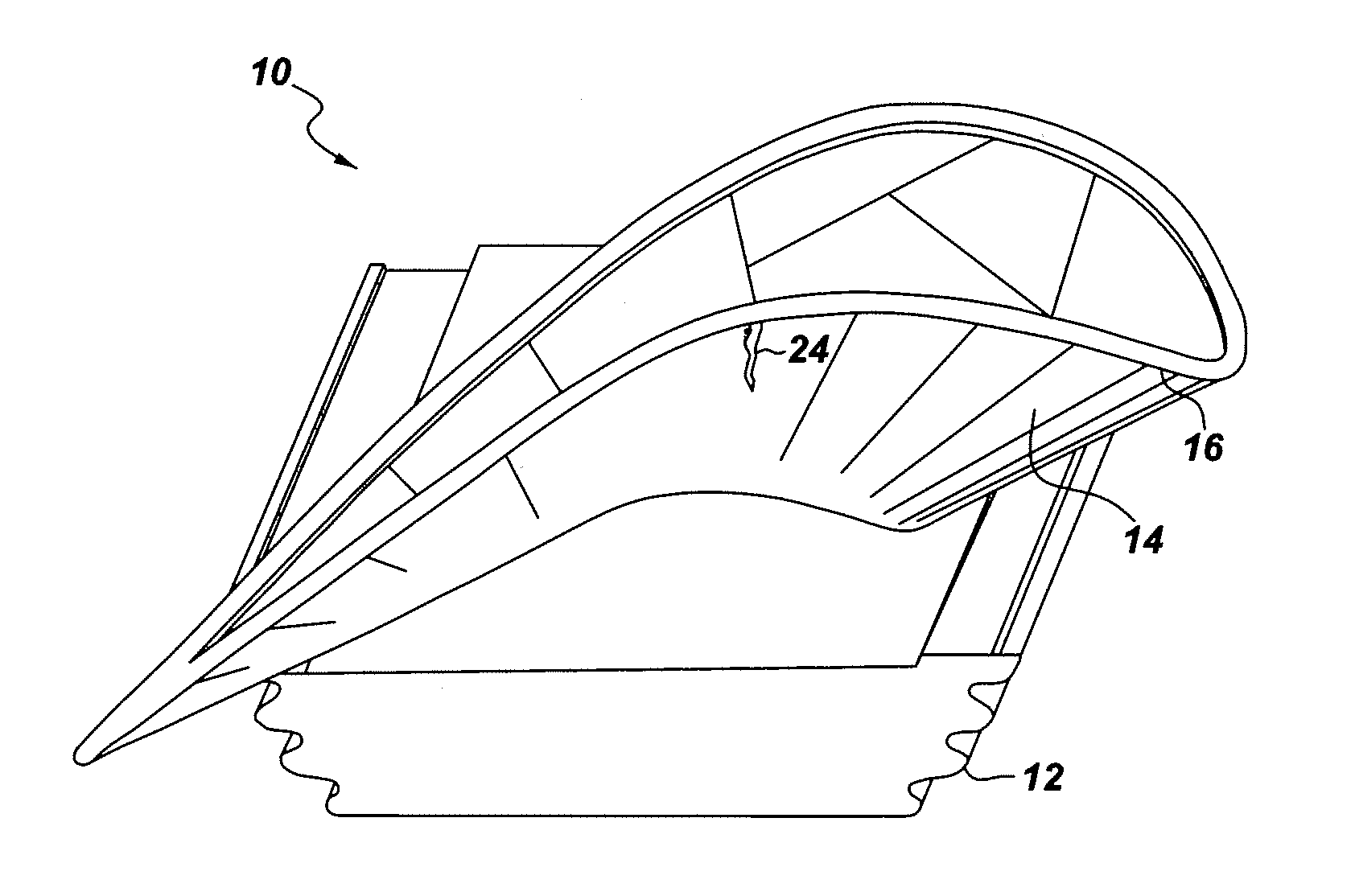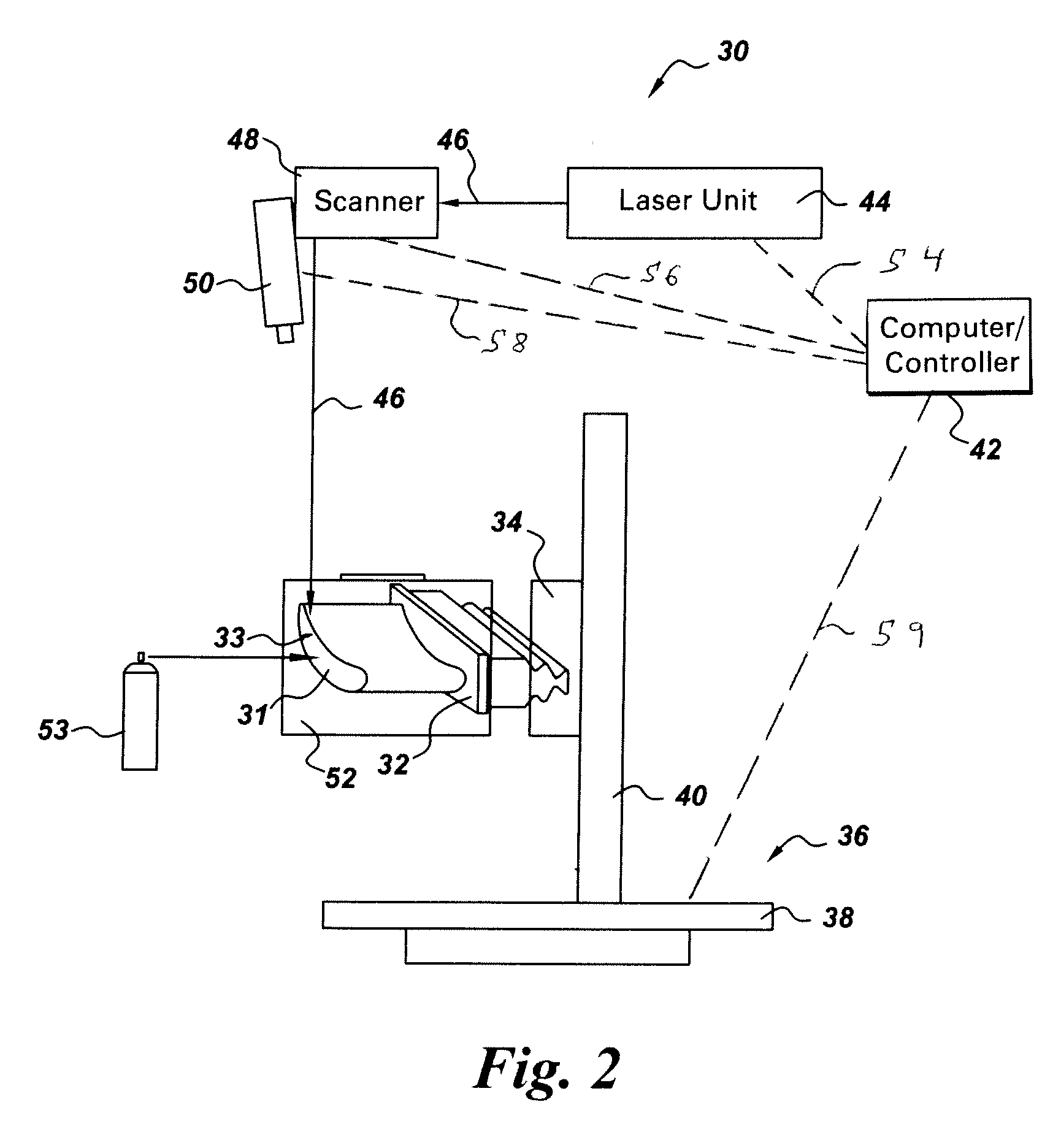Methods for treating superalloy articles, and related repair processes
a superalloy and repair process technology, applied in the field of metal and metal alloys, can solve the problems of turbine engine blade cracks, cracks primarily occurring, and components of gas turbine engines to develop cracks
- Summary
- Abstract
- Description
- Claims
- Application Information
AI Technical Summary
Problems solved by technology
Method used
Image
Examples
Embodiment Construction
[0017]The various compositional and process ranges disclosed herein are inclusive and combinable (e.g., ranges of “up to about 25 wt %”, or, more specifically, “about 5 wt % to about 20 wt %”, are inclusive of the endpoints and all intermediate values of the ranges). Moreover, the term “combination” is inclusive of blends, mixtures, alloys, reaction products, and the like. Furthermore, the terms “first,”“second,” and the like, herein do not denote any order, quantity, or importance, but rather are used to distinguish one element from another. The terms “a” and “an” herein do not denote a limitation of quantity, but rather denote the presence of at least one of the referenced items. The modifier “about” used in connection with a quantity is inclusive of the stated value, and has the meaning dictated by context, (e.g., includes the degree of error associated with measurement of the particular quantity). The suffix “(s)” as used herein is intended to include both the singular and the p...
PUM
| Property | Measurement | Unit |
|---|---|---|
| depth | aaaaa | aaaaa |
| depth | aaaaa | aaaaa |
| width | aaaaa | aaaaa |
Abstract
Description
Claims
Application Information
 Login to View More
Login to View More - R&D
- Intellectual Property
- Life Sciences
- Materials
- Tech Scout
- Unparalleled Data Quality
- Higher Quality Content
- 60% Fewer Hallucinations
Browse by: Latest US Patents, China's latest patents, Technical Efficacy Thesaurus, Application Domain, Technology Topic, Popular Technical Reports.
© 2025 PatSnap. All rights reserved.Legal|Privacy policy|Modern Slavery Act Transparency Statement|Sitemap|About US| Contact US: help@patsnap.com



